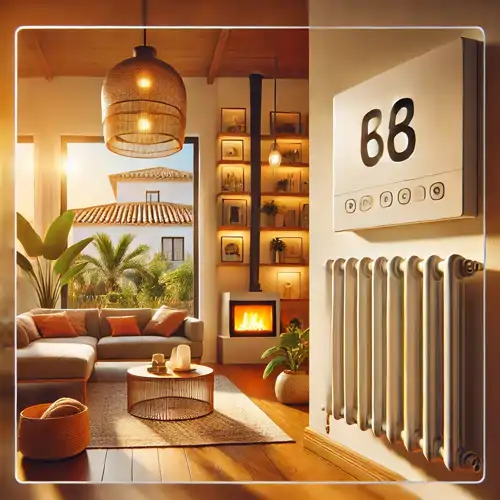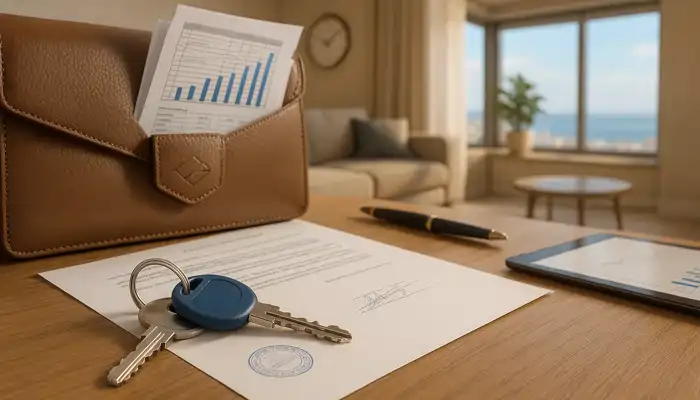Why Spain Can Be Cold Even on the Coast
Spain is known for its mild climate and the large number of sunny days in a year. However, from December to March in some regions there is damp weather driven by cold winds. The lack of the usual central heating forces residents to look for optimal solutions to heat their apartments and houses. As a consequence, the issue of choosing an effective and economical heating system in Spain becomes particularly acute.
Main Issues When Choosing Heating in Spain
- Unusual humidity in winter, especially on the coast.
- The absence of a unified centralized heating system (as from ТЭЦ (thermal power station) in some other countries).
- The diversity of fuel types and equipment, which can be confusing.
- Differences in the structural features of housing: new energy-efficient homes versus old residential stock without insulation.
- The desire to reduce electricity or gas bills, as well as to decrease harmful impact on the environment.
Main Types of Heating in Spain
Central (Complex) Heating
In Spain the term central usually refers to heating within a single residential complex rather than an entire district or neighborhood. Approximately 10 percent of households are connected to such systems, which operate mainly on natural gas. This option is often convenient but may not be possible in every building.
Individual Heating
This is the most popular option and offers wide possibilities of choice. Owners decide for themselves which fuel and equipment to use: gas or diesel boilers, air conditioners, electric water heaters, pellet stoves and more. The major advantage is independence from neighbors and complete freedom in selecting the optimal configuration. The disadvantage is that all installation and maintenance costs fall on the owner.
From the Perspective of Energy Sources
Heating systems in Spain can also be classified by the type of fuel:
- Gas boilers (natural gas) - the most economical in operation and widely used.
- Electric heating - quite popular although often more expensive in everyday use.
- Heating using propane and butane - increasingly rare because it is inconvenient due to the regular replacement of cylinders.
- Diesel boilers - common in houses and villas where a separate fuel storage tank can be installed.
- Biomass (wood, pellets, forestry waste) - a promising and environmentally friendly option. The cost of the equipment is still high but operation is inexpensive.
- Renewable energy (solar panels, aerothermal systems etc.) - in demand in modern new builds. Aerothermal systems can obtain up to 70 percent of energy from the air or groundwater and solar panels can save up to 40 percent on heating.
New Builds Versus Secondary Housing: Which Is More Advantageous
Demand for new builds in Spain has increased by approximately 10 percent in recent years. One reason is the widespread implementation of modern heating and air conditioning systems. New buildings are designed with energy efficiency in mind: they feature improved thermal insulation, and solar panels and aerothermal systems are installed. The high cost of new housing is often justified by long-term savings on utility bills and comfort in use.
In the secondary market houses may be less adapted to low temperatures: thin walls, poor insulation and the absence of an integrated heating system. Therefore it is important to consider:
- The orientation of the apartment or house: south, southeast or southwest allow additional use of natural sunlight.
- The floor level: lower floors are usually colder than middle floors.
- The presence of quality double-glazed windows.
- The age of the building and the presence of insulation.
- The energy efficiency class according to the certificate, as the difference in energy consumption between classes A and D can be very large.
How to Save on Heating in Spain
Choosing Energy-Efficient Equipment
If individual heaters must be chosen, opt for infrared, convective-infrared or metal-ceramic types. They are economical and heat the room quickly. It is also useful to consider electric blankets and electric bedspreads, which effectively warm the space at night while consuming a moderate amount of electricity.
Ensuring Thermal Insulation
Installing insulation, checking for drafts around doors and windows, and using carpets help to reduce heat loss. Even partial measures can have a significant effect, allowing heating expenses to be reduced. Experts estimate that good insulation can lower energy consumption by up to 30 percent.
Regular Ventilation
Paradoxically, brief ventilation (5–10 minutes) reduces humidity and makes the air more comfortable. The room does not have time to cool down, breathing becomes easier and heating humid air is much more difficult than heating dry air.
Choosing the Right Tariffs
There are many tariffs for electricity and gas. For example a major Spanish company may offer a flexible system with hourly billing. If most energy is consumed during off-peak hours the savings can be considerable. The average consumption in Spain is about 10000 kWh per year, half of which is used for heating.
Taking Advantage of Climate Features
It is not uncommon for the outdoor temperature at midday to be higher than indoors: in some regions during winter days the temperature can reach +20 to +25 °C while in an unheated space it may be +15 °C. If the weather permits it is more beneficial to go out onto a terrace or into a courtyard to warm up in the sun without additional heating costs.
Advice When Buying or Renting a Property
If long-term residence is intended, it is advisable to consider new builds with modern systems already installed. In the case of purchasing secondary market housing, pay attention to:
- The presence or possibility of installing a gas boiler, which often provides an optimal balance between price and convenience.
- The condition of the electrical wiring, if electric convectors or air conditioners are preferred.
- Checking the energy certificate, which indicates the consumption class and the main characteristics of the property.
Conclusions and the Main Solution to the Problem
The absence of the usual central heating can become a problem for those encountering the Spanish winter for the first time. However, choosing an appropriate heating system, proper insulation of the property and a correctly selected tariff help to ensure comfort at home and optimize expenses. Investing in a more modern or well-insulated property can pay off with low electricity bills and the absence of constant modifications. The simplest solution to this problem is found in new builds, where innovative systems are installed — from solar panels to aerothermal systems.








